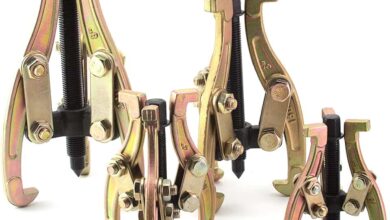Alternative Dental Solutions to Traditional Dental Braces
Teeth misalignment is one of the most common dental health issues of 21 st century. Although
teeth misalignment may see minor at the beginning, their long-term aesthetics implications are
dire.
Teeth misalignments have been known to pave way for the development of other serious
dental health issues like bad bites and sleep apnea—a condition that makes breathing difficult
as you sleep.
For the longest time, patients with bad bites have always opted for traditional braces. The
reason behind the traditional braces’ popularity can be associated to less public awareness on
alternative (but effective) dental solutions.
In this article, we will discuss four alternative dental solutions to traditional braces that your
orthodontist might recommend in your next teeth misalignment clinic.
Ceramic Braces
Ceramic braces have similar structure and functionality as traditional braces.
The major difference is that the pressure devices that transfer tension from the brackets are
shaped and colored just like your teeth.
Intrinsically, the ceramic pressure components are made of amalgam resin that makes them
resemble your natural teeth’s appearance; only the wire and bracket are visible when you are
wearing ceramic braces.
Although ceramic braces are slightly more expensive than traditional braces, the added
aesthetic and discreet characteristics make them a worthy investment.
Lingual Braces
Lingual braces are more of an improved version of the traditional braces. The main difference
between lingual and conventional braces is the sitting position; lingual braces sit behind the
teeth and facing the tongue.
Lingual braces come in two types. The first one is social lingual braces—ideal for small teeth
misalignments and gaps, and normally fixed to the front six teeth. The second type is standard
lingual braces, specifically made to help fix major teeth misalignments. Standard lingual braces
are attached to the entire arch (to cover the teeth).
Most people prefer installing lingual braces over traditional braces because they are less visible
when you talk, smile, or eat.
Nevertheless, lingual braces require manual tightening, similar to traditional braces. As such,
you require several orthodontic visits before your teeth sit properly.
Clear Teeth Aligners
A significant number of people who opted for traditional braces have often complained of food
particles getting stuck between the metal parts even after brushing. In addition, there has been
concerns on the ability to floss when on traditional braces.
Due to the stuck food particles, your teeth may start decaying as the food particles rot. Indeed,
there will be additional dental problems once the braces are removed.
However, proper clear teeth aligners are such a live saver. As the name suggests, clear teeth
aligners are made of thin, clear plastic materials. Unlike traditional braces that require
permanent fixing, clear teeth aligners are a slide-and-fit solution. The clear teeth aligners are
structured to wrap around your teeth upon wearing them.
Clear dental aligners are clean, easy to remove, and are more comfortable and discreet. Once
you have your clear teeth aligners installed, your Rochester Hills Orthodontics specialist will
recommend wearing them for at least 20 hours a day to apply sufficient pressure on your teeth.
You can remove your clear dental aligners when eating, brushing, or cleaning the aligners.
The other reason why clear teeth aligners may be an ideal teeth misalignment solution is that
your treatment is mainly done at home. Unlike traditional braces that require manual
tightening by your orthodontist, you can wear and clean you clear aligners at the comfort of
your house.
Self-Litigating Braces
Traditional braces have rubber bands as the primary tension source. However, self-litigating
braces have a metallic archwire that anchors specialized brackets pressing directly against your
teeth.
Essentially, the self-litigating braces come with clear or metallic brackets that help create a
more discreet look since they are made to offer optimal functionality and aesthetics.
Furthermore, self-litigating braces have fewer working components than traditional braces. The
minimalistic design makes your mouth less crowded for a better look as you smile.
Traditional and self-litigating braces have a similar price range. Therefore, it would be best to
consult your orthodontist and assess if self-litigating braces are a good fit for you.
Conclusion
It is quite unfortunate how reduced dental aesthetics can affect one’s self-esteem. Although
traditional dental braces have had their own share of success, having your orthodontist get an
alternative teeth alignment solution might be a rewarding move.

